What are the glands of the body. The Endocrine System: Glands, Functions, and Disorders Explained
How does the endocrine system work. What are the main glands in the human body. Which hormones do different glands produce. What are common endocrine disorders. How do endocrine glands affect overall health.
The Endocrine System: An Overview of Glands and Hormones
The endocrine system is a complex network of glands that produce and secrete hormones directly into the bloodstream. These hormones act as chemical messengers, regulating various bodily functions and maintaining homeostasis. Understanding the endocrine system is crucial for comprehending how our bodies function and respond to internal and external stimuli.
What exactly is a gland? A gland is a specialized organ that produces and releases substances for use in the body. In the context of the endocrine system, these substances are hormones. Endocrine glands release their hormones directly into the bloodstream, allowing them to travel throughout the body and affect target cells and organs.

Key Functions of the Endocrine System
- Regulates mood, growth, and development
- Controls metabolism
- Influences organ function
- Manages reproduction and sexual function
- Coordinates hormone release
- Maintains homeostasis
Major Glands of the Endocrine System and Their Functions
The endocrine system consists of several glands located throughout the body. Each gland has specific functions and produces unique hormones. Let’s explore the major glands and their roles in maintaining bodily functions.
Hypothalamus: The Control Center
How does the hypothalamus regulate the endocrine system? The hypothalamus acts as a crucial link between the nervous system and the endocrine system. Its primary function is to control the pituitary gland, often referred to as the “master gland.” The hypothalamus produces releasing and inhibiting hormones that instruct the pituitary gland to start or stop hormone production.
Pituitary Gland: The Master Orchestrator
Why is the pituitary gland called the master gland? The pituitary gland, located at the base of the brain, earns this title due to its extensive influence over other endocrine glands. It produces a wide array of hormones that regulate various bodily functions:
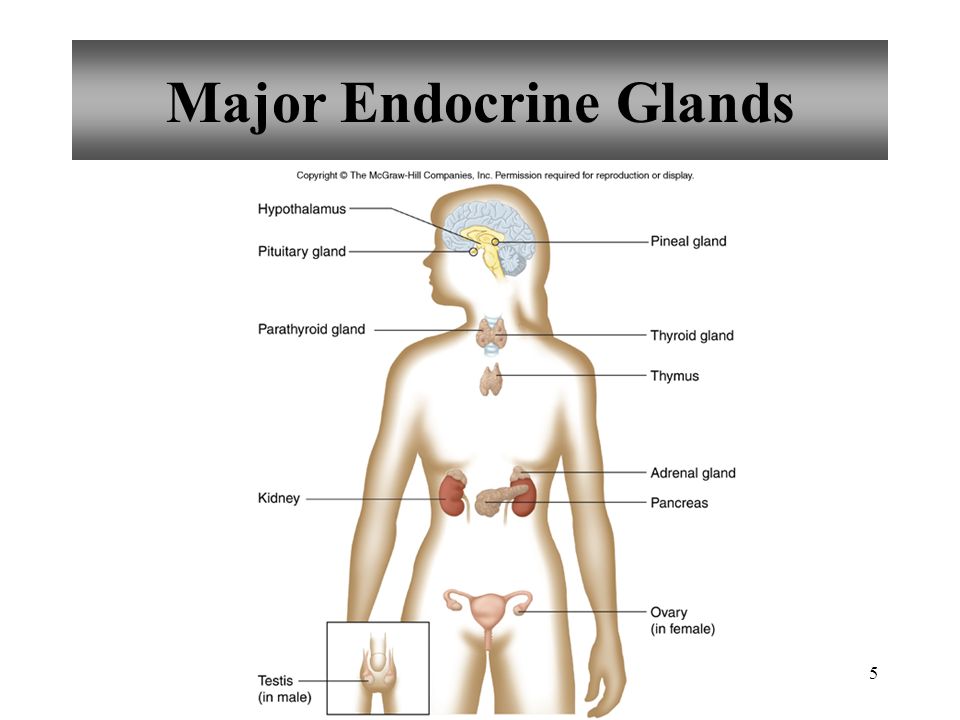
- Growth hormone (GH): Stimulates growth and cell reproduction
- Prolactin: Promotes milk production in breastfeeding mothers
- Adrenocorticotropic hormone (ACTH): Stimulates the adrenal glands
- Thyroid-stimulating hormone (TSH): Controls thyroid hormone production
- Follicle-stimulating hormone (FSH) and Luteinizing hormone (LH): Regulate reproductive functions
- Antidiuretic hormone (ADH): Manages water balance and blood pressure
- Oxytocin: Facilitates childbirth and milk ejection during breastfeeding
Pineal Gland: The Sleep Regulator
How does the pineal gland affect our sleep patterns? The pineal gland, a small endocrine gland in the brain, produces melatonin. This hormone plays a crucial role in regulating our circadian rhythm, or sleep-wake cycle. Melatonin production increases in the evening, signaling to the body that it’s time to prepare for sleep.
The Thyroid and Parathyroid Glands: Metabolism and Calcium Balance
The thyroid and parathyroid glands, located in the neck, play vital roles in regulating metabolism and calcium levels in the body.

Thyroid Gland: The Metabolic Regulator
How does the thyroid gland influence metabolism? The thyroid gland produces two main hormones: thyroxine (T4) and triiodothyronine (T3). These hormones regulate metabolism, affecting nearly every cell in the body. They influence heart rate, body temperature, and how quickly the body burns calories.
The thyroid also produces calcitonin, a hormone that helps regulate calcium levels in the blood and contributes to bone strength.
Parathyroid Glands: Calcium Homeostasis
What role do the parathyroid glands play in bone health? The four small parathyroid glands, located behind the thyroid, produce parathyroid hormone (PTH). This hormone is crucial for maintaining proper calcium and phosphorus levels in the body. PTH regulates calcium absorption from the intestines, reabsorption in the kidneys, and release from bones, ensuring that blood calcium levels remain within a narrow, healthy range.
The Thymus and Adrenal Glands: Immunity and Stress Response
The thymus and adrenal glands play essential roles in immune function and the body’s response to stress.

Thymus: The Immune System Developer
How does the thymus contribute to immune function? The thymus, located in the upper chest, is most active during childhood and plays a crucial role in developing the immune system. It produces T-lymphocytes, a type of white blood cell essential for fighting infections. As we age, the thymus gradually shrinks and becomes less active, but its early influence on the immune system remains vital throughout life.
Adrenal Glands: The Stress Responders
What hormones do the adrenal glands produce? The adrenal glands, situated atop the kidneys, produce several important hormones:
- Cortisol: Regulates metabolism and helps the body respond to stress
- Aldosterone: Manages blood pressure and electrolyte balance
- Adrenaline (epinephrine) and noradrenaline (norepinephrine): Trigger the “fight or flight” response
- Small amounts of sex hormones (androgens and estrogens)
These hormones help regulate metabolism, blood pressure, and the body’s response to stress and inflammation.

The Pancreas: Balancing Blood Sugar and Digestion
The pancreas is a unique organ that serves both endocrine and exocrine functions, playing a crucial role in digestion and blood sugar regulation.
Endocrine Function: Glucose Regulation
How does the pancreas regulate blood sugar levels? The pancreas produces two main hormones that regulate blood glucose:
- Insulin: Lowers blood sugar by promoting glucose uptake by cells
- Glucagon: Raises blood sugar by stimulating the liver to release stored glucose
The balance between these hormones helps maintain stable blood sugar levels. In diabetes, this balance is disrupted, leading to high blood sugar levels.
Exocrine Function: Digestive Enzymes
What is the exocrine function of the pancreas? While not part of the endocrine system, the pancreas also produces digestive enzymes that are released into the small intestine. These enzymes help break down proteins, fats, and carbohydrates in the food we eat, facilitating nutrient absorption.
Reproductive Glands: Ovaries and Testes
The ovaries in females and testes in males are the primary reproductive glands, producing sex hormones and gametes.

Ovaries: Female Reproductive Hormones
What hormones do the ovaries produce? The ovaries produce two main types of hormones:
- Estrogen: Promotes development of female secondary sexual characteristics, regulates the menstrual cycle, and supports pregnancy
- Progesterone: Prepares the uterus for pregnancy and supports fetal development
These hormones play crucial roles in female reproductive health, including menstruation, fertility, and pregnancy.
Testes: Male Reproductive Hormones
What is the primary hormone produced by the testes? The testes primarily produce testosterone, the main male sex hormone. Testosterone is responsible for:
- Development of male secondary sexual characteristics
- Sperm production
- Muscle mass and strength
- Bone density
- Sex drive
Testosterone production increases significantly during puberty and plays a vital role in male reproductive health throughout life.
Common Endocrine Disorders and Their Impact
Endocrine disorders occur when glands produce too much or too little of a hormone, leading to various health issues. Let’s explore some common endocrine disorders and their effects on the body.

Thyroid Disorders
What are the most common thyroid disorders? The two main thyroid disorders are:
- Hypothyroidism: Underactive thyroid, leading to symptoms like fatigue, weight gain, and cold intolerance
- Hyperthyroidism: Overactive thyroid, causing symptoms such as rapid heartbeat, weight loss, and heat intolerance
Diabetes Mellitus
How does diabetes affect the body? Diabetes is a disorder of glucose metabolism, characterized by high blood sugar levels. There are two main types:
- Type 1 Diabetes: The pancreas produces little or no insulin
- Type 2 Diabetes: The body becomes resistant to insulin or doesn’t produce enough
Both types can lead to complications such as cardiovascular disease, kidney damage, and nerve damage if not properly managed.
Adrenal Disorders
What are some common adrenal gland disorders? Adrenal gland disorders include:
- Addison’s Disease: Insufficient production of adrenal hormones
- Cushing’s Syndrome: Overproduction of cortisol
- Pheochromocytoma: Tumor of the adrenal gland causing excess adrenaline production
Pituitary Disorders
How do pituitary disorders affect the body? Pituitary disorders can have wide-ranging effects due to the gland’s influence over other endocrine glands. Common disorders include:

- Acromegaly: Excess growth hormone production in adults
- Hypopituitarism: Underproduction of one or more pituitary hormones
- Prolactinoma: Tumor causing excess prolactin production
Maintaining Endocrine Health: Lifestyle and Prevention
While some endocrine disorders are genetic or unavoidable, there are steps we can take to support overall endocrine health and potentially prevent certain disorders.
Balanced Diet and Exercise
How can diet and exercise support endocrine health? A balanced diet rich in nutrients and regular exercise can help maintain hormonal balance and support overall endocrine function. Specific benefits include:
- Improved insulin sensitivity, reducing the risk of type 2 diabetes
- Better stress management, supporting adrenal function
- Maintenance of healthy body weight, which can influence hormone production
- Enhanced sleep quality, supporting melatonin production
Stress Management
Why is stress management important for endocrine health? Chronic stress can disrupt the endocrine system, particularly the adrenal glands. Implementing stress-reduction techniques such as meditation, yoga, or deep breathing exercises can help maintain hormonal balance and support overall endocrine function.

Regular Health Check-ups
How often should endocrine function be checked? Regular health check-ups, including blood tests to assess hormone levels, can help detect endocrine disorders early. The frequency of these check-ups may vary depending on age, risk factors, and overall health status. Consult with a healthcare provider to determine the appropriate screening schedule.
Environmental Considerations
Can environmental factors affect endocrine health? Certain environmental factors, including exposure to endocrine-disrupting chemicals found in some plastics, pesticides, and industrial chemicals, may interfere with hormone function. Minimizing exposure to these substances, when possible, may help support endocrine health.
In conclusion, the endocrine system plays a vital role in maintaining overall health and well-being. Understanding its components, functions, and potential disorders can help us appreciate the complexity of our bodies and take steps to support endocrine health. By adopting healthy lifestyle habits, managing stress, and staying vigilant about regular health check-ups, we can work towards maintaining a balanced and well-functioning endocrine system throughout our lives.
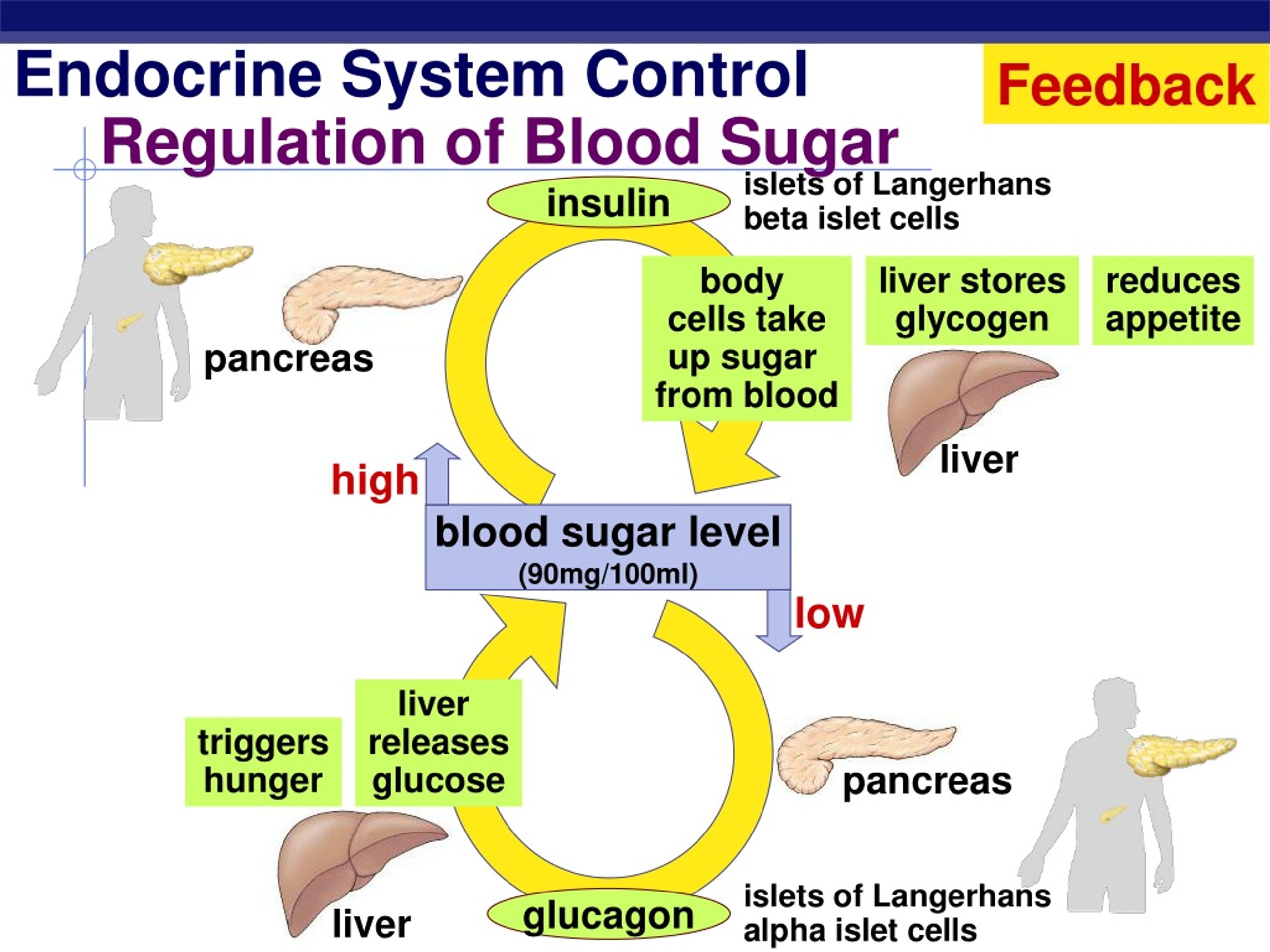
The Endocrine System and Glands of the Human Body: Function and Disorders
Written by Barbara Brody
- What Is the Endocrine System?
- What Is a Gland?
- Endocrine System Functions
- Parts of the Endocrine System
- Health Issues
- Endocrine System Disorders
- More
The endocrine system is a network of glands in your body that make the hormones that help cells talk to each other. They’re responsible for almost every cell, organ, and function in your body.
If your endocrine system isn’t healthy, you might have problems developing during puberty, getting pregnant, or managing stress. You also might gain weight easily, have weak bones, or lack energy because too much sugar stays in your blood instead of moving into your cells where it’s needed for energy.
A gland is an organ that makes and puts out hormones that do a specific job in your body. Endocrine and exocrine glands release the substances they make into your bloodstream.
Your endocrine system:
- Makes hormones that control your moods, growth and development, metabolism, organs, and reproduction
- Controls how your hormones are released
- Sends those hormones into your bloodstream so they can travel to other body parts
Many glands make up the endocrine system. The hypothalamus, pituitary gland, and pineal gland are in your brain. The thyroid and parathyroid glands are in your neck. The thymus is between your lungs, the adrenals are on top of your kidneys, and the pancreas is behind your stomach. Your ovaries (if you’re a woman) or testes (if you’re a man) are in your pelvic region.
- Hypothalamus. This organ connects your endocrine system with your nervous system. Its main job is to tell your pituitary gland to start or stop making hormones.
- Pituitary gland. This is your endocrine system’s master gland. It uses information it gets from your brain to tell other glands in your body what to do.
 It makes many important hormones, including growth hormone; prolactin, which helps breastfeeding moms make milk; antidiuretic hormone(ADH) (vasopressin), which controls blood pressure and helps control body water balance through its effect on the kidney, corticotropin /ACTH: Adrenocorticotrophic hormone. which stimulates the adrenal gland to make certain hormones, thyroid-stimulating hormone (TSH), which stimulates the production and secretion of thyroid hormones, oxytocin which helps in milk ejection during breast feeding; and luteinizing hormone, which manages estrogen in women and testosterone in men.
It makes many important hormones, including growth hormone; prolactin, which helps breastfeeding moms make milk; antidiuretic hormone(ADH) (vasopressin), which controls blood pressure and helps control body water balance through its effect on the kidney, corticotropin /ACTH: Adrenocorticotrophic hormone. which stimulates the adrenal gland to make certain hormones, thyroid-stimulating hormone (TSH), which stimulates the production and secretion of thyroid hormones, oxytocin which helps in milk ejection during breast feeding; and luteinizing hormone, which manages estrogen in women and testosterone in men. - Pineal gland. It makes a chemical called melatonin that helps your body get ready to go to sleep.
- Thyroid gland. This gland makes thyroid hormone, which controls your growth and metabolism. If this gland doesn’t make enough (a condition called hypothyroidism), everything happens more slowly. Your heart rate might slow down.
 You could get constipated. And you might gain weight. If it makes too much (hyperthyroidism), everything speeds up. Your heart might race. You could have diarrhea. And you might lose weight without trying. The thyroid gland also produces the hormone calcitonin, which may contribute to bone strength by helping calcium to be incorporated into bone.
You could get constipated. And you might gain weight. If it makes too much (hyperthyroidism), everything speeds up. Your heart might race. You could have diarrhea. And you might lose weight without trying. The thyroid gland also produces the hormone calcitonin, which may contribute to bone strength by helping calcium to be incorporated into bone. - Parathyroid. This is a set of four small glands behind your thyroid. They play a role in bone health. The glands control your levels of calcium and phosphorus.
- Thymus. This gland makes white blood cells called T-lymphocytes that fight infection and are crucial as a child’s immune system develops. The thymus starts to shrink after puberty.
- Adrenals. Best known for making the “fight or flight” hormone adrenaline (also called epinephrine), these two glands also make hormones called corticosteroids. They affect your metabolism heart rate, oxygen intake, blood flow, and sexual function, among other things.

- Pancreas. This organ is part of both your digestive and endocrine systems. It makes digestive enzymes that break down food. It also makes the hormones insulin and glucagon. These ensure you have the right amount of sugar in your bloodstream and your cells.
- If you don’t make insulin, which is the case for people with type 1 diabetes, your blood sugar levels can get dangerously high. In type 2 diabetes, the pancreas usually makes some insulin but not enough.
- Ovaries. In women, these organs make estrogen and progesterone. These hormones help develop breasts at puberty, regulate the menstrual cycle, and support a pregnancy.
- Testes. In men, the testes make testosterone. It helps them grow facial and body hair at puberty. It also tells the penis to grow larger and plays a role in making sperm.
As you get older, it’s natural to notice some things related to your endocrine system. Your metabolism tends to slow down. So you might gain weight even though you haven’t changed how you eat or exercise. Hormonal shifts also explain, at least in part, why you’re more likely to have heart disease, osteoporosis, and type 2 diabetes as you age.
Your metabolism tends to slow down. So you might gain weight even though you haven’t changed how you eat or exercise. Hormonal shifts also explain, at least in part, why you’re more likely to have heart disease, osteoporosis, and type 2 diabetes as you age.
No matter how old you are, stress, infections, and being around certain chemicals can also mess with parts of your endocrine system. And genetics or lifestyle habits can increase your chances of an endocrine disorder like hypothyroidism, diabetes, or osteoporosis.
- Acromegaly. Sometimes the pituitary gland makes too much growth hormone and your bones get bigger. It usually affects your hands, feet, and face. It usually starts in middle age.
- Adrenal insufficiency. When you have this, your adrenal glands don’t make enough of certain hormones, like cortisol, which controls stress.
- Cushing’s disease. In this, your body makes too much cortisol.
 You could gain weight, get stretch marks, bruise easily at first, then get weakened muscles and bones and possibly develop a hump on your upper back.
You could gain weight, get stretch marks, bruise easily at first, then get weakened muscles and bones and possibly develop a hump on your upper back. - Hyperthyroidism. This is when your thyroid gland makes more hormones than your body needs. You might hear it called overactive thyroid. It makes your system run fast and you might feel nervous, lose weight, and have a rapid heartbeat or trouble sleeping.
- Hypothyroidism. When your body doesn’t make enough thyroid hormone, your system slows down. You might feel tired, gain weight, have a slow heartbeat, and get joint and muscle pains.
- Hypopituitarism. Sometimes your pituitary gland doesn’t make enough of certain hormones and your adrenal and thyroid glands can’t work right.
- Multiple endocrine neoplasia. This is a group of disorders that affect your endocrine system. It causes tumors on at least two endocrine glands or in other organs and tissues.

- Polycystic ovary syndrome. An imbalance of reproductive hormones can cause your ovaries to either not make an egg or not release it during ovulation. This can throw off your periods, cause acne, and make hair to grow on your face or chin.
- Precocious puberty. When glands that control reproduction don’t work properly, some kids start puberty abnormally early — around 8 in girls and 9 in boys.
Top Picks
The Endocrine System and Glands of the Human Body: Function and Disorders
Written by Barbara Brody
- What Is the Endocrine System?
- What Is a Gland?
- Endocrine System Functions
- Parts of the Endocrine System
- Health Issues
- Endocrine System Disorders
- More
The endocrine system is a network of glands in your body that make the hormones that help cells talk to each other.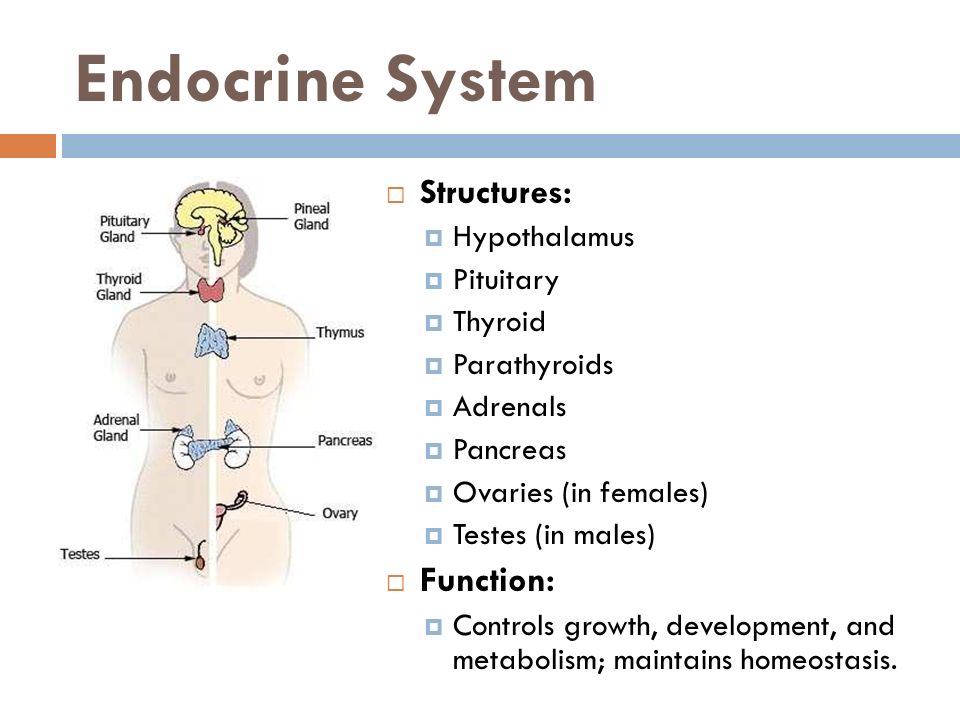 They’re responsible for almost every cell, organ, and function in your body.
They’re responsible for almost every cell, organ, and function in your body.
If your endocrine system isn’t healthy, you might have problems developing during puberty, getting pregnant, or managing stress. You also might gain weight easily, have weak bones, or lack energy because too much sugar stays in your blood instead of moving into your cells where it’s needed for energy.
A gland is an organ that makes and puts out hormones that do a specific job in your body. Endocrine and exocrine glands release the substances they make into your bloodstream.
Your endocrine system:
- Makes hormones that control your moods, growth and development, metabolism, organs, and reproduction
- Controls how your hormones are released
- Sends those hormones into your bloodstream so they can travel to other body parts
Many glands make up the endocrine system. The hypothalamus, pituitary gland, and pineal gland are in your brain. The thyroid and parathyroid glands are in your neck. The thymus is between your lungs, the adrenals are on top of your kidneys, and the pancreas is behind your stomach. Your ovaries (if you’re a woman) or testes (if you’re a man) are in your pelvic region.
The thymus is between your lungs, the adrenals are on top of your kidneys, and the pancreas is behind your stomach. Your ovaries (if you’re a woman) or testes (if you’re a man) are in your pelvic region.
- Hypothalamus. This organ connects your endocrine system with your nervous system. Its main job is to tell your pituitary gland to start or stop making hormones.
- Pituitary gland. This is your endocrine system’s master gland. It uses information it gets from your brain to tell other glands in your body what to do. It makes many important hormones, including growth hormone; prolactin, which helps breastfeeding moms make milk; antidiuretic hormone(ADH) (vasopressin), which controls blood pressure and helps control body water balance through its effect on the kidney, corticotropin /ACTH: Adrenocorticotrophic hormone. which stimulates the adrenal gland to make certain hormones, thyroid-stimulating hormone (TSH), which stimulates the production and secretion of thyroid hormones, oxytocin which helps in milk ejection during breast feeding; and luteinizing hormone, which manages estrogen in women and testosterone in men.

- Pineal gland. It makes a chemical called melatonin that helps your body get ready to go to sleep.
- Thyroid gland. This gland makes thyroid hormone, which controls your growth and metabolism. If this gland doesn’t make enough (a condition called hypothyroidism), everything happens more slowly. Your heart rate might slow down. You could get constipated. And you might gain weight. If it makes too much (hyperthyroidism), everything speeds up. Your heart might race. You could have diarrhea. And you might lose weight without trying. The thyroid gland also produces the hormone calcitonin, which may contribute to bone strength by helping calcium to be incorporated into bone.
- Parathyroid. This is a set of four small glands behind your thyroid. They play a role in bone health. The glands control your levels of calcium and phosphorus.
- Thymus. This gland makes white blood cells called T-lymphocytes that fight infection and are crucial as a child’s immune system develops.
 The thymus starts to shrink after puberty.
The thymus starts to shrink after puberty. - Adrenals. Best known for making the “fight or flight” hormone adrenaline (also called epinephrine), these two glands also make hormones called corticosteroids. They affect your metabolism heart rate, oxygen intake, blood flow, and sexual function, among other things.
- Pancreas. This organ is part of both your digestive and endocrine systems. It makes digestive enzymes that break down food. It also makes the hormones insulin and glucagon. These ensure you have the right amount of sugar in your bloodstream and your cells.
- If you don’t make insulin, which is the case for people with type 1 diabetes, your blood sugar levels can get dangerously high. In type 2 diabetes, the pancreas usually makes some insulin but not enough.
- Ovaries. In women, these organs make estrogen and progesterone. These hormones help develop breasts at puberty, regulate the menstrual cycle, and support a pregnancy.

- Testes. In men, the testes make testosterone. It helps them grow facial and body hair at puberty. It also tells the penis to grow larger and plays a role in making sperm.
As you get older, it’s natural to notice some things related to your endocrine system. Your metabolism tends to slow down. So you might gain weight even though you haven’t changed how you eat or exercise. Hormonal shifts also explain, at least in part, why you’re more likely to have heart disease, osteoporosis, and type 2 diabetes as you age.
No matter how old you are, stress, infections, and being around certain chemicals can also mess with parts of your endocrine system. And genetics or lifestyle habits can increase your chances of an endocrine disorder like hypothyroidism, diabetes, or osteoporosis.
- Acromegaly. Sometimes the pituitary gland makes too much growth hormone and your bones get bigger. It usually affects your hands, feet, and face.
 It usually starts in middle age.
It usually starts in middle age. - Adrenal insufficiency. When you have this, your adrenal glands don’t make enough of certain hormones, like cortisol, which controls stress.
- Cushing’s disease. In this, your body makes too much cortisol. You could gain weight, get stretch marks, bruise easily at first, then get weakened muscles and bones and possibly develop a hump on your upper back.
- Hyperthyroidism. This is when your thyroid gland makes more hormones than your body needs. You might hear it called overactive thyroid. It makes your system run fast and you might feel nervous, lose weight, and have a rapid heartbeat or trouble sleeping.
- Hypothyroidism. When your body doesn’t make enough thyroid hormone, your system slows down. You might feel tired, gain weight, have a slow heartbeat, and get joint and muscle pains.
- Hypopituitarism. Sometimes your pituitary gland doesn’t make enough of certain hormones and your adrenal and thyroid glands can’t work right.

- Multiple endocrine neoplasia. This is a group of disorders that affect your endocrine system. It causes tumors on at least two endocrine glands or in other organs and tissues.
- Polycystic ovary syndrome. An imbalance of reproductive hormones can cause your ovaries to either not make an egg or not release it during ovulation. This can throw off your periods, cause acne, and make hair to grow on your face or chin.
- Precocious puberty. When glands that control reproduction don’t work properly, some kids start puberty abnormally early — around 8 in girls and 9 in boys.
Top Picks
Thyroid gland – what it is, where it is located, diseases
Thyroid gland: general information
The thyroid gland (popularly “thyroid gland”) is a small organ located at the base of the neck. The thyroid gland is often compared to a butterfly because it also has “wings” (two lobes) and a “body” (an isthmus between the lobes). Each lobe is filled with follicles, special structures containing thyroid hormones.
The thyroid gland is often compared to a butterfly because it also has “wings” (two lobes) and a “body” (an isthmus between the lobes). Each lobe is filled with follicles, special structures containing thyroid hormones.
The shape of the thyroid gland is an individual feature: sometimes one “wing” is larger than the other, and the “calf” may not be visible at all
Outside, the thyroid gland is covered with two layers: the first (outer) is in direct contact with the muscles of the larynx and the surrounding nerves, and the second creates a layer between the outer layer and the gland itself and allows it to move when a person swallows or talks.
The thyroid gland, along with the adrenal glands, hypothalamus, pituitary gland, ovaries and testicles, is part of the endocrine system. This system regulates the work of the body with the help of hormones.
The thyroid gland secretes thyroid hormones – T3 (triiodothyronine) and T4 (thyroxine) into the blood. They affect the metabolic rate, heart rate, digestive system, vitamin synthesis and even mood, as well as regulate body temperature and the menstrual cycle.
Iodine is needed for the synthesis of T3 and T4. This element is not produced in the body – it can be obtained from food or medicines. Most of all iodine is found in seaweed, seafood, fish, dairy products, egg yolks.
In addition to T3 and T4, thyroid cells produce another hormone – calcitonin. It regulates the exchange of calcium and phosphorus in the body.
The thyroid gland is controlled by the pituitary gland, a pea-sized gland located at the base of the brain that synthesizes thyroid-stimulating hormone (TSH). The interaction of the pituitary gland and the thyroid gland is arranged according to the principle of feedback. So, when the gland begins to produce less T4 than it needs, the level of TSH in the blood increases, and with an increase in the amount of T4, the level of TSH decreases.
If the work of the hypothalamus, pituitary gland or the thyroid gland itself is disturbed, the metabolism changes and the whole organism suffers.
Diseases of the thyroid gland
Malfunctions of the hypothalamus, pituitary gland or thyroid gland can occur for various reasons: due to certain medications, viral infections, iodine deficiency, chronic stress, autoimmune reactions, pregnancy and childbirth. In this case, both low activity of hormone production and high activity are considered a failure.
In this case, both low activity of hormone production and high activity are considered a failure.
Without treatment, thyroid problems will only get worse and can lead to obesity, heart disease, inability to conceive or carry a child, and in some cases, coma.
The most common pathologies of the thyroid gland :
- hyperthyroidism is a condition in which the thyroid gland produces too much of the hormones T4 and T3;
- hypothyroidism – a condition in which the function of the thyroid gland is reduced, not enough hormones T4 and T3 are produced;
- thyroiditis – inflammation of the thyroid gland;
- Graves’ disease is an autoimmune disease that develops against the background of hyperproduction of the hormones T4 and T3;
- goiter – enlargement of the thyroid gland, often accompanied by hyperproduction of its hormones, which looks like a swelling on the neck;
- thyroid nodules – voluminous formations that can be both benign and malignant;
- Thyroid cancer is a malignant tumor formed from the cells of the gland.

Symptoms of thyroid disorders
Symptoms of thyroid pathologies vary. However, there is something in common: they increase gradually, so people may not notice for a long time that something has gone wrong.
Symptoms of hyperthyroidism (thyrotoxicosis)
Due to the overactive thyroid gland, the body literally goes crazy: metabolic processes are accelerated, systems begin to work intermittently.
Common symptoms of hyperthyroidism :
- causeless weight loss against the background of a constant feeling of hunger;
- palpitations – the pulse can be over 100 beats per minute at rest;
- cardiac arrhythmia;
- bloating, flatulence, diarrhea;
- fatigue;
- heat intolerance, feeling hot for no reason;
- increased sweating;
- irritability;
- insomnia;
- hand trembling;
- menstrual disorders in women;
- dry skin;
- hair loss or brittleness.

Women are 10 times more likely to be diagnosed with hyperthyroidism than men. Usually the pathology starts at 20–40 years old
Due to hyperthyroidism, bones can become brittle, vision is reduced, cardiovascular disorders can join, up to heart failure and heart attack.
Symptoms of hypothyroidism
Lack of thyroid hormones initially presents with mild weakness and weight gain. Over time, more noticeable symptoms occur.
Common symptoms of hypothyroidism :
- unreasonable weight gain;
- slow heart rate;
- lethargy, drowsiness;
- decrease in body temperature;
- hypersensitivity to cold;
- regular constipation;
- fatigue;
- swelling of the face, legs and arms;
- slow heartbeat;
- dry skin;
- brittle nails and hair;
- irregular menses;
- difficulty concentrating;
- depressed mood up to depression.

Most often, hypothyroidism is diagnosed in women over 40 years of age
Symptoms of thyroiditis
There are several types of thyroiditis – acute, subacute and chronic.
Acute and subacute thyroiditis are relatively rare. They occur due to a bacterial, fungal, or parasitic infection and are usually severe. A person’s temperature rises (up to 39-40 °C), he cannot turn his head, there is severe pain in the neck, which radiates to the ear or shoulder.
Chronic thyroiditis is much more common. It develops due to a malfunction in the immune system, as a result of which the body takes thyroid cells for pathogens and attacks them. Also, chronic inflammation of the thyroid gland can occur when taking certain medications, such as drugs for the treatment of arrhythmia and cancer, iodine-containing drugs, drugs with lithium.
People with chronic thyroiditis become depleted of thyroid hormones over time, symptoms of hypothyroidism develop: skin and hair become dry, and nails become brittle, hair begins to fall out, sensitivity to cold appears, general and muscle weakness, drowsiness, decreased concentration and deterioration memory, swelling, constipation, overweight, joint pain.
In addition, the thyroid gland gradually increases and over time begins to compress the surrounding organs and tissues and “solder” to them. Therefore, such thyroiditis causes symptoms from neighboring organs: shortness of breath, difficulty swallowing, hoarseness, wheezing.
The risk of developing autoimmune thyroiditis increases with age
Symptoms of Graves’ disease
Graves’ disease is an autoimmune disease that leads to an overactive thyroid gland and excessive production of hormones. As a result, the classic symptoms of hyperthyroidism occur: unreasonable weight loss, constant feeling of hunger, heart palpitations, flatulence and diarrhea, heat intolerance, excessive sweating, irritability.
A characteristic symptom of Graves’ disease is secondary exophthalmos, protrusion of the eyeball (bulging eyes)
In addition, in people with Graves’ disease, the skin condition changes, it becomes thickened, the microrelief is smoothed out, severe itching appears.
Signs of goiter
Goiter is an enlargement of the thyroid gland, a symptom of a number of diseases, and not an independent pathology. It can occur if the thyroid gland cannot cope with the production of hormones. In order to somehow compensate for their deficiency or excess, it begins to increase in volume.
Goiter looks like a round bump or swelling at the base of the neck
Signs of goiter :
- feeling of fullness in the neck,
- lump in throat,
- difficulty swallowing,
- cough,
- hoarseness of voice.
Symptoms of thyroid nodules
Thyroid nodules look like lumps, consisting of clusters of thyroid cells. They can be solid or filled with liquid. Usually these are benign formations, they are detected in most adults. In rare cases, such a node can be a malignant tumor.
Most people are unaware that they have thyroid nodules because the condition does not cause symptoms. You can notice them when they grow and begin to squeeze neighboring tissues, the trachea and nerve endings.
You can notice them when they grow and begin to squeeze neighboring tissues, the trachea and nerve endings.
The appearance of thyroid nodules may be accompanied by the following symptoms :
- swallowing disorder,
- neck pain,
- shortness of breath,
- hoarseness of voice.
Symptoms of thyroid cancer
Thyroid cancer is a malignant tumor. Scientists still do not know exactly why it occurs. It is believed that genetic disorders are to blame.
Usually such tumors do not manifest themselves for a long time. Symptoms become noticeable as the tumor grows and include: swelling in the neck, difficulty swallowing, coughing, hoarseness.
Rarely, thyroid cancer can affect hormone production and cause symptoms of hyper- or hypothyroidism.
Diagnosis of thyroid disorders
As a rule, thyroid diseases develop asymptomatically for a long time, so people do not go to the doctor in the early stages of pathologies.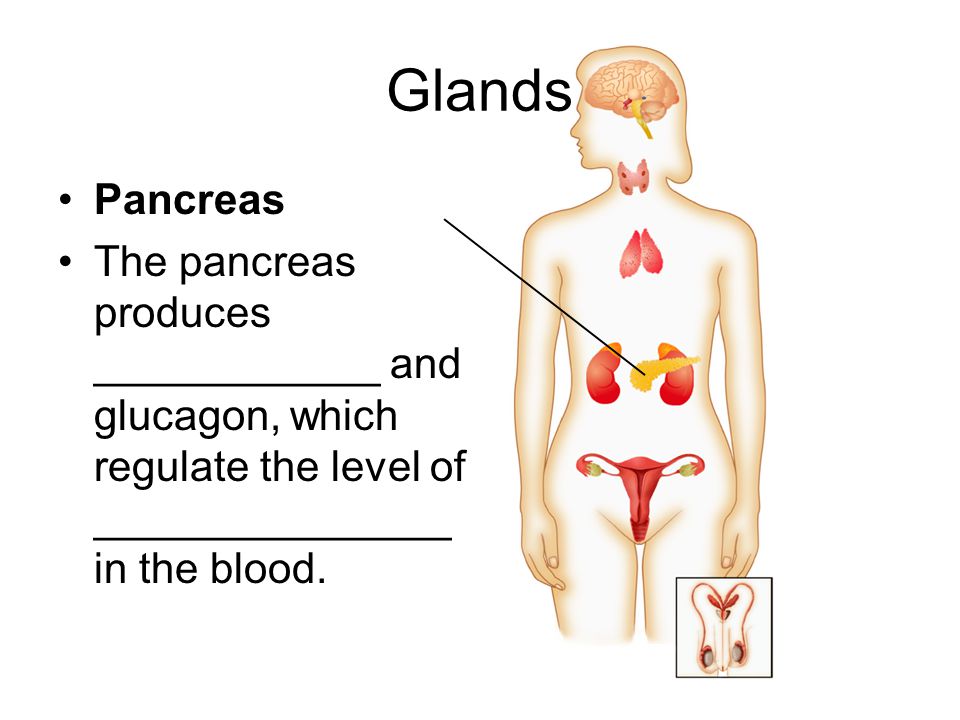 To understand that something is wrong with the organ, you will need to consult a specialist, as well as laboratory and instrumental examinations. In some cases, thyroid tissue is examined, for this a fine-needle biopsy is performed.
To understand that something is wrong with the organ, you will need to consult a specialist, as well as laboratory and instrumental examinations. In some cases, thyroid tissue is examined, for this a fine-needle biopsy is performed.
An endocrinologist deals with the diagnosis and treatment of thyroid diseases.
When to check the thyroid gland
Regular screening examinations help prevent severe pathologies. In addition, you should pay attention to your well-being. Sometimes even mild symptoms can signal a serious malfunction in the thyroid gland.
Early signs of thyroid dysfunction :
- sudden change in weight;
- swelling of the face;
- causeless irritability, tearfulness;
- discomfort in the neck;
- menstrual disorder;
- brittle nails and hair;
- stool problems;
- quickening or slowing of the heartbeat.
To check how the thyroid gland works, blood tests for hormones T4, T3, and TSH help.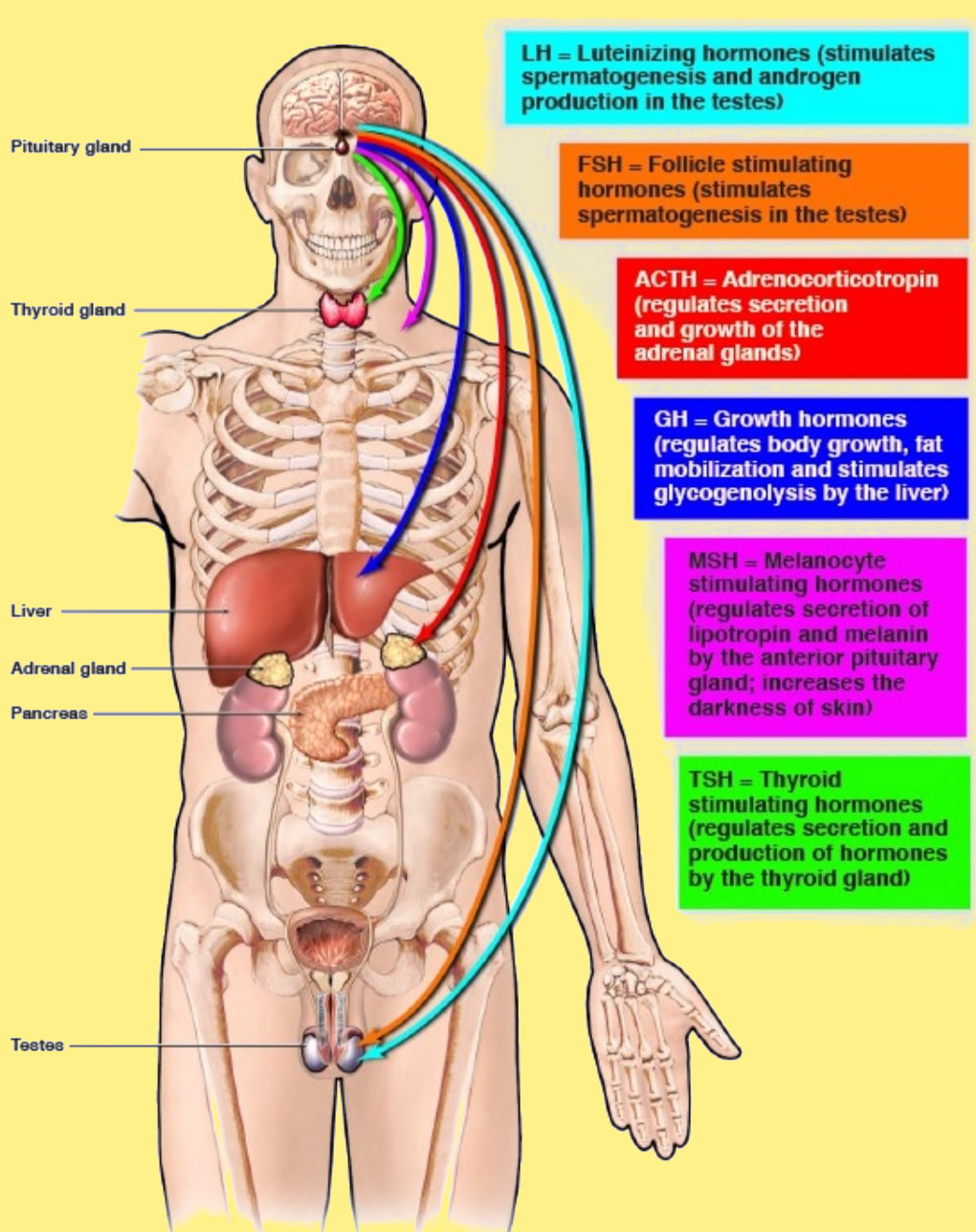
Thyroid function assessment
Code 28.338.
Comprehensive study that helps diagnose thyroid diseases and monitor their treatment. It is recommended for people at risk for thyroid diseases, including residents of regions with a low natural iodine content in drinking water, and patients with a history of thyroid diseases.
106 bonuses
1,060 ₽
Add to cart
1 day
Can be rented at home
Ven. blood 140 ₽
1 060 ₽
106 bonuses
1 day
Available at home
Ven. blood 140 ₽
1,060 ₽
Add to cart
If their blood level is elevated, the doctor diagnoses hyperthyroidism. And if lowered – hypothyroidism.
These tests can detect problems in the thyroid gland, but cannot determine their cause. This will require additional research.
For example, to detect autoimmune damage to the thyroid gland, a doctor prescribes blood tests for antibodies to thyroglobulin (AT-TG) and thyroid peroxidase (AT-TPO) – proteins that are found exclusively in the cells of the thyroid gland and are released when it is destroyed.
Cause of thyroid disease
Code 28.365.
A comprehensive study determines the content of antibodies to thyroglobulin (AT-TG) and thyroid peroxidase (AT-TPO) in the blood – proteins that are found exclusively in thyroid gland cells. The analysis allows to identify autoimmune lesions of the thyroid gland. May be used as an adjunct to screening thyroid function assessment.
78 bonuses
780 ₽
Add to cart
1 day
Can be rented at home
Ven. blood 140 ₽
780 ₽
78 bonuses
1 day
Can be rented at home
Ven. blood 140 ₽
780 ₽
Add to cart
If a neoplasm in the thyroid gland is suspected, the doctor prescribes an ultrasound examination (ultrasound) to assess the structure of the organ itself and the pathological element.
In addition, scintigraphy may be performed. This research method allows you to get an image of the organ, which shows changes in the tissue. To do this, a radioactive drug is injected into a vein, which enters the thyroid gland with the blood flow. A special device captures the radiation and converts it into a computer image.
To do this, a radioactive drug is injected into a vein, which enters the thyroid gland with the blood flow. A special device captures the radiation and converts it into a computer image.
In this case, “hot” nodes may appear on the monitor – zones of more active accumulation of the radiopharmaceutical, and “cold” ones – not accumulating the radiopharmaceutical. “Hot” nodes most often correspond to areas with active synthesis of thyroid hormones, for example, with nodular thyrotoxic goiter. “Cold” zones of reduced activity usually correspond to cysts, fibrosis, thyroiditis, malignant neoplasms of the thyroid gland.
Thyroid scintigraphy showing inflammatory lesions that stain blue
Treatment of thyroid disorders
Treatment will differ depending on the cause of the disease. So, some pathologies require surgical intervention, others are treated with the help of medications. In some cases, no therapy is used at all, but it is important for the patient to be under medical supervision.
Persistent hypo- or hyperthyroidism is treated with thyroid hormone preparations. As a rule, they need to be taken for a long time. They correct the work of the organ and usually quickly alleviate the condition of a person.
Prevention of thyroid diseases
No specific prevention of thyroid disease has been developed. However, the health of an organ largely depends on the supply of iodine to the body, so doctors recommend paying attention to the prevention of its deficiency. Especially often, pregnant and lactating women, newborns, as well as residents of regions remote from the sea face iodine deficiency.
Usually adults need to receive 150 micrograms of iodine per day, pregnant and lactating women – at least 250. For children, other norms are established: children under one year old need to receive at least 50 micrograms, from 1 year to 7 years – 90, from 7 to 12 years old – 120.
More than 2 billion people live with iodine deficiency, according to WHO.
There are no territories in Russia where its deficiency has not been registered.
The human body does not produce iodine on its own, but receives it only from food. There is a lot of this mineral in sea water, so seaweed, fish and seafood are especially rich in iodine. It is found in smaller quantities in dairy products and eggs.
Foods rich in iodine :
- seaweed,
- cod,
- cranberry,
- squid,
- milk,
- eggs.
Not everyone needs to take supplements or multivitamins with iodine, but only those who have been prescribed them by a doctor based on the results of blood tests.
Abuse of iodine is not worth it – an excess, like a deficiency, is dangerous to health
Due to the fact that it is not always possible to get enough iodine from food, salt, bread and other products have been iodized in Russia. Thanks to this, there are fewer people with iodine deficiency.
Sources
- Diseases and conditions associated with iodine deficiency: clinical guidelines / Ministry of Health of the Russian Federation. 2020.
- Prakash R. T., Ramachandran A., Savalgi G. B., et al. Variations in the anatomy of the thyroid gland: clinical implications of a cadaver study // Anat Sci Int. 2012. Vol. 87(1). P. 45–49. doi:10.1007/s12565-011-0115-9
- Ross D.S., Burch H.B., Cooper D.S., et al. 2016 American Thyroid Association Guidelines for Diagnosis and Management of Hyperthyroidism and Other Causes of Thyrotoxicosis // Thyroid. 2016. Vol. 26(10). P. 1343–1421. doi:10.1089/thy.2016.0229
Ito Clinic
Thyroid functions
Location and size of the thyroid gland
The thyroid gland is located in the front of the neck, slightly
below the Adam’s apple. It covers the trachea, as if
butterfly spread its wings. Its size is about 4 cm
in height, and weight – up to 20 g.
The thyroid gland is a very thin and soft organ. IN
Normally, it cannot be detected
touching the neck, but even a slight swelling is good
palpable. Larger swelling is clearly visible
to the naked eye.
The body produces different types of hormones (female
hormones, male hormones, adrenal hormones, etc.).
Organs that produce hormones are called endocrine
organs, and the thyroid gland is one of them. Her
function is to produce thyroid hormones from
iodine contained in food (mainly in marine
algae).
What are thyroid hormones
Food proteins, fats and
carbohydrates are metabolized and used
as materials for tissue formation or as
energy for the body. Thyroid hormones function
Thyroid hormones function
stimulation or intensification of these metabolic processes
substances. In addition, they play an important role in the development of the fetus and
the growth of the child’s body.
There are two types of thyroid hormones: thyroxine (T4),
containing four iodine atoms, and triiodothyronine (T3) containing
three iodine atoms.
The thyroid gland produces mainly
Thus, T4, which is transformed into T3 in the liver and other
organs and performs its function as a hormone.
Most T4 and T3 are bound to plasma proteins.
The hormones that act in the body are free T4 (Free
T4=FT4) and free T3 (Free T3=FT3), not associated with proteins
blood, which are tested in a blood test.
Functions of the pituitary gland
The body has a mechanism to maintain
almost constant level of thyroid hormones in
blood.

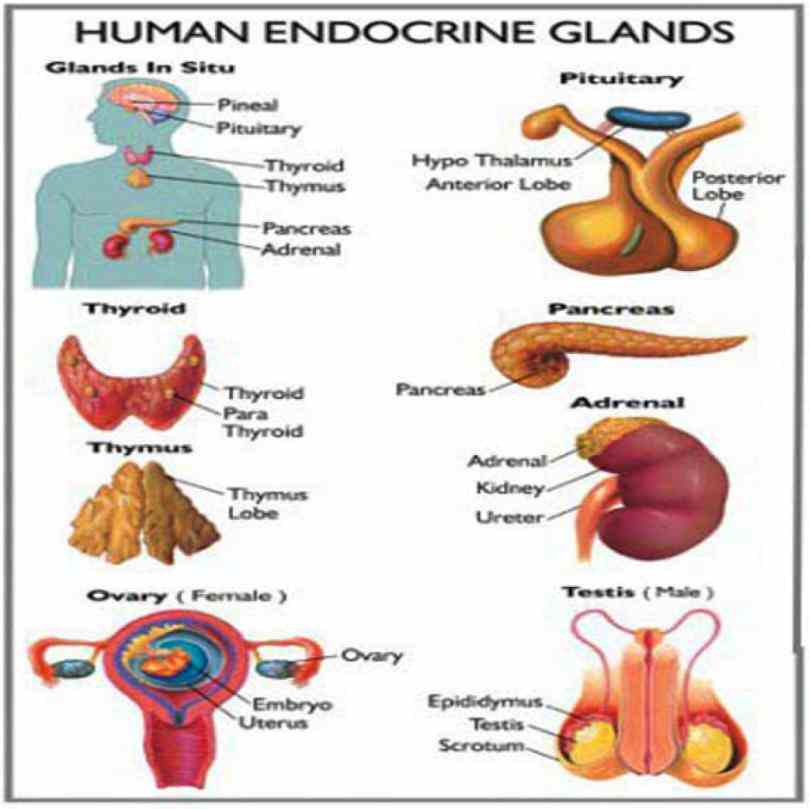 It makes many important hormones, including growth hormone; prolactin, which helps breastfeeding moms make milk; antidiuretic hormone(ADH) (vasopressin), which controls blood pressure and helps control body water balance through its effect on the kidney, corticotropin /ACTH: Adrenocorticotrophic hormone. which stimulates the adrenal gland to make certain hormones, thyroid-stimulating hormone (TSH), which stimulates the production and secretion of thyroid hormones, oxytocin which helps in milk ejection during breast feeding; and luteinizing hormone, which manages estrogen in women and testosterone in men.
It makes many important hormones, including growth hormone; prolactin, which helps breastfeeding moms make milk; antidiuretic hormone(ADH) (vasopressin), which controls blood pressure and helps control body water balance through its effect on the kidney, corticotropin /ACTH: Adrenocorticotrophic hormone. which stimulates the adrenal gland to make certain hormones, thyroid-stimulating hormone (TSH), which stimulates the production and secretion of thyroid hormones, oxytocin which helps in milk ejection during breast feeding; and luteinizing hormone, which manages estrogen in women and testosterone in men.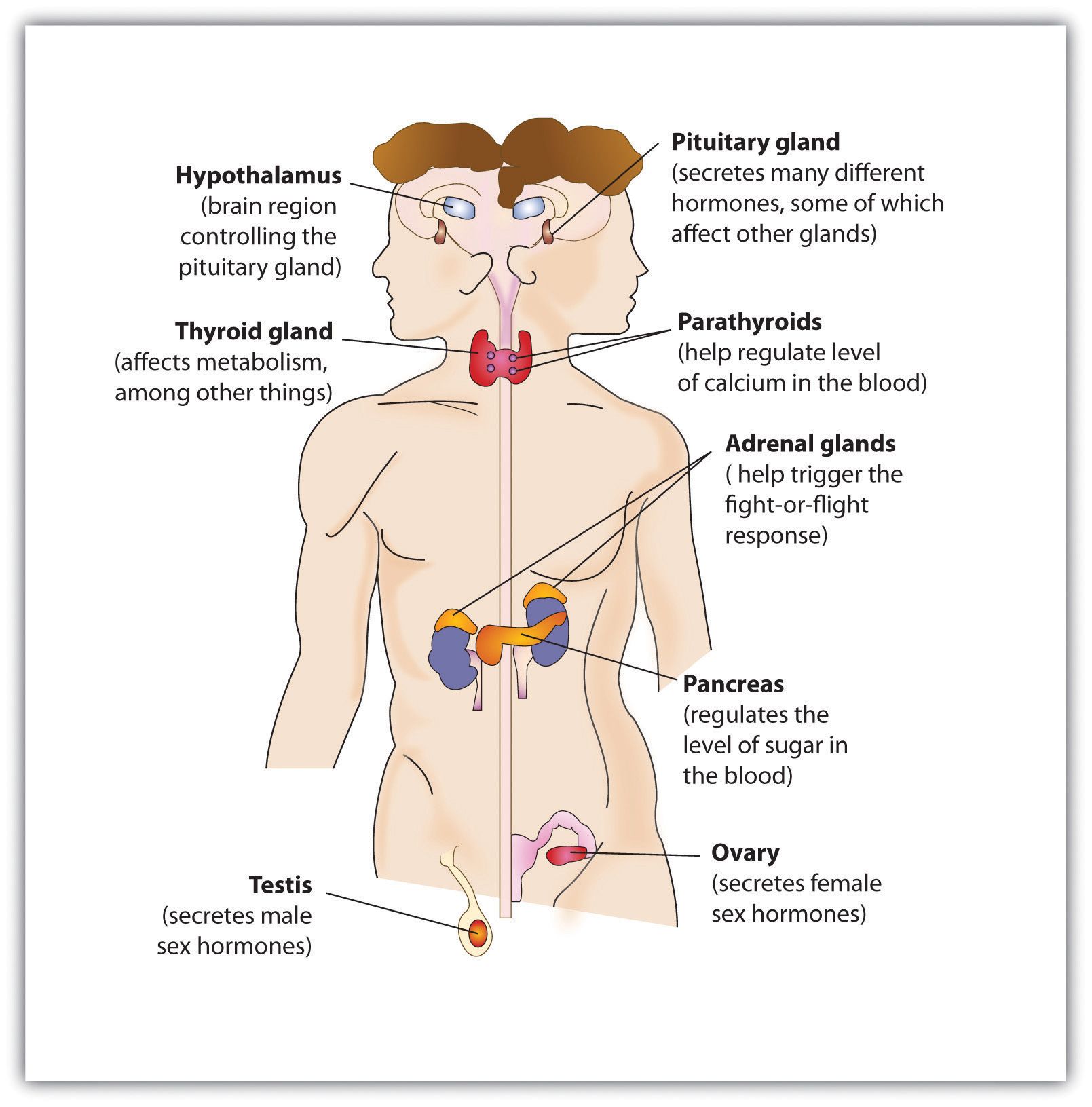 You could get constipated. And you might gain weight. If it makes too much (hyperthyroidism), everything speeds up. Your heart might race. You could have diarrhea. And you might lose weight without trying. The thyroid gland also produces the hormone calcitonin, which may contribute to bone strength by helping calcium to be incorporated into bone.
You could get constipated. And you might gain weight. If it makes too much (hyperthyroidism), everything speeds up. Your heart might race. You could have diarrhea. And you might lose weight without trying. The thyroid gland also produces the hormone calcitonin, which may contribute to bone strength by helping calcium to be incorporated into bone.
 You could gain weight, get stretch marks, bruise easily at first, then get weakened muscles and bones and possibly develop a hump on your upper back.
You could gain weight, get stretch marks, bruise easily at first, then get weakened muscles and bones and possibly develop a hump on your upper back.

 The thymus starts to shrink after puberty.
The thymus starts to shrink after puberty.
 It usually starts in middle age.
It usually starts in middle age.
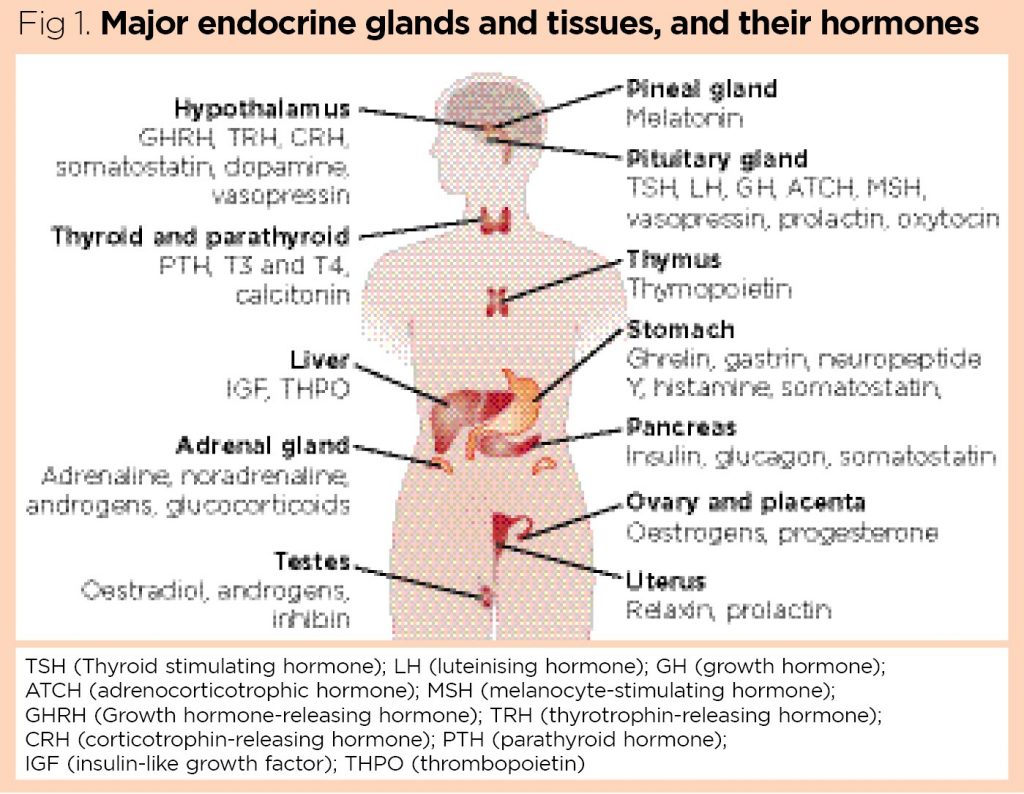


 There are no territories in Russia where its deficiency has not been registered.
There are no territories in Russia where its deficiency has not been registered.